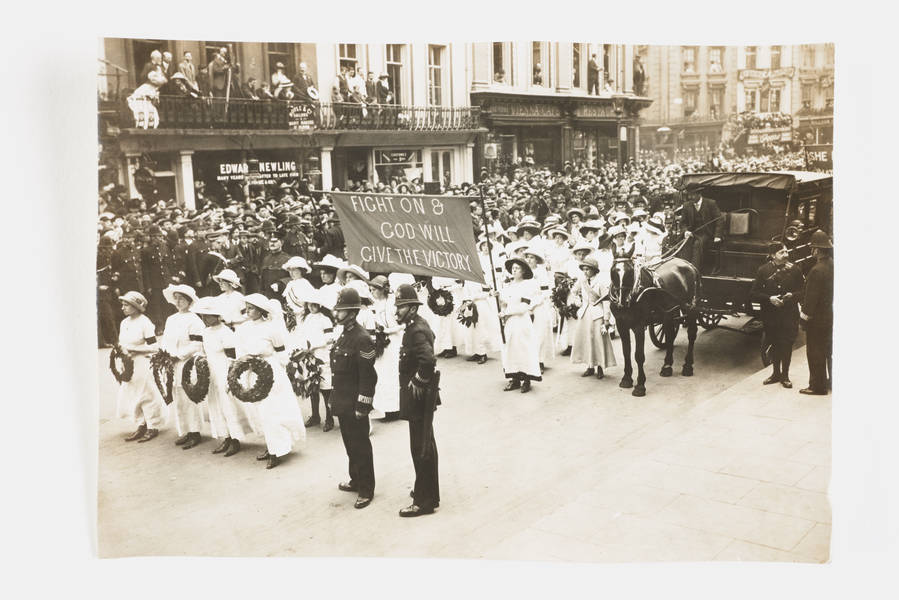Suffragette: The Long March Toward Votes for Women

Image from IMDb
***SPOILER ALERT***
Months after the 100th anniversary of women gaining the right to vote in the United States, and a week after the inauguration of the US’s first female Vice President, I found myself watching a movie, Suffragette, about the suffrage movement in the United Kingdom. Great Britain granted “certain women over age 30” the right to vote in 1918, but it wasn’t until 1928 that the majority of women finally gained the same voting rights as men.
Suffragette was both as inspiring and dismal as one would expect it to be, considering the subject matter. Maud Watts, the main character, works at a laundry, and is somewhat accidentally caught up in the women’s movement when she is mistaken for a suffragette and arrested.
Unwillingly at first, she becomes more and more involved in the movement, to the point where she is arrested multiple times, loses her job and her family, and ultimately witnesses a seminal event in the British Suffrage Movement: the death of her friend Emily.
On Derby Day of 1913, in the middle of the race, Emily Davison stepped onto the racetrack in front of the racehorse owned by King George V. She was trampled to death in front of thousands. The event was filmed live and reported around the world. She had a ‘Votes for Women’ flag that she may have been attempting to attach to the horse’s bridle as it passed.
An elaborate funeral was held for her ten days later. Some 5000 suffragettes marched behind the carriage carrying her coffin to the church, and crowds lining the streets were estimated at 50,000 people. Her death is considered a turning point in the movement for women’s voting rights in the United Kingdom.
Why I Recommend This Movie
I enjoy movies based on factual events, whether or not they are based on specific historical people. Emmaline Pankhurst, who founded and led the Women’s Political and Social Union, and Emily Davison were real people, but Maud and the rest of the characters are fictitious.
The movie showed the hardship and heartache faced by women, particularly lower class women, who had very few rights over their bodies, their lives, or their futures.
I was moved by the depiction of how resigned women were to their lot in life. Maud, asked why she felt she should have the vote, is hard pressed to give an answer. She had never imagined it could be a possibility.
The movie did a good job at presenting multiple perspectives to the political times. Women are shown with varying reactions to the movement, from disgust to enthusiasm. Even within the movement, characters are shown arguing about methods and tactics they should employ.
Pankhurst famously encouraged action beyond words, saying “The argument of the broken window pane is the most valuable argument in modern politics.” and “I have never advised the destruction of life, but of property, yes.” Some women are shown balking at the idea of bombing the vacant home of a member of Parliament as stepping beyond the line of acceptability.

In any social movement, there are bound to be differing views and disagreements within the ranks about any number of things, and Suffragette gave dimension and realism to the complexities of the movement it portrays.
The timing of my viewing of this film affected my appreciation of it. While I watched this historically accurate story of a time when women couldn’t even vote, I was rejoicing over the election of the United States’ first female Vice President. I thought of my grandmother, who happened to get married on election day of 1920. She cast her very first vote in the morning and got married in the afternoon.
I also thought of how far the US still has to go as far as rights for all. I was thinking of millions of people marching in last summer’s protests sparked by the murder of George Floyd.
I couldn’t help but compare the women’s resignation to their lot in life depicted in the film to the fact that today African American boys in the US are still given ‘the talk’ about how to conduct themselves in society to avoid being arrested or even killed because of their skin color.
Or the scene of a poor White woman losing her child to thousands of Native American children being stolen from their families to be raised in White environs, or more recently, to Hispanic immigrant children being yanked from their families at US borders.
Suffragette was certainly inspiring and thought-provoking. I was left with the contrasting feelings of great challenge at what is yet to be done, and also great hope made possible by recent events. May we learn from the past, so that we do not doom ourselves to repeat its mistakes.

Helpful Information
Director: Sarah Gavron
Cast: Carey Mulligan, Helena Bonham Carter, Brendan Gleeson, with Meryl Streep
Watched: January 26, 2021
Available on: Netflix
My rating: 4 stars
Released in 2015
Trivia
On June 4 1913, King George V’s horse Anmer at the Derby. The horse and jockey were both well enough to compete in another race two weeks later.
Looking for more reviews for entertainment? Check out these film, book, and music reviews from contributors and staff at the MockingOwl Roost.
- Wonder Woman 1984 – Film Review
- Lagaan – Film Review
- The Book Spy – Fiction Book Review
- Go Hex Yourself – Fiction Book Review
Chris Hagberg is a lover of dogs, travel, and photographing landscapes from a moving vehicle. She is happy for any time she gets to spend with her son, daughter-in-law, and grandson. In her spare time brought on by the 2020 pandemic, Chris joined a group of women forming a startup company that makes apps for the Amazon Echo. She aspires to be a writer some day, but for now is content to polish up the writings of others.
Hear about Chris’s adventures and mishaps on Facebook. Email her at: chrishagberg@mockingowlroost.com






4 Comments
[…] the dusty campestral road,walked a mother with a child strapped on her back.Her gaze was as uncertain as her every step…And […]
[…] Suffragette Film Review […]
[…] Suffragette film review […]
[…] Suffragette film review […]